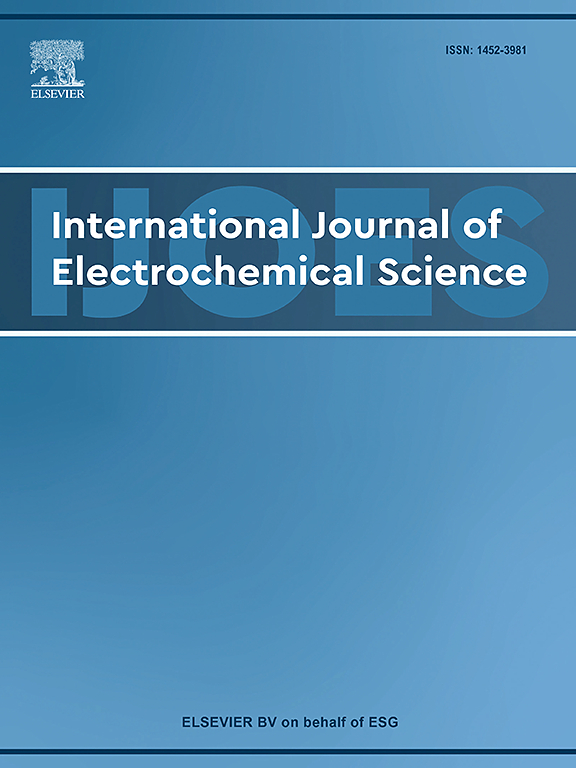疏水Cu-PTFE电极电催化芳香族酯转化为邻芳香族酯酰胺
IF 2.4
4区 化学
Q4 ELECTROCHEMISTRY
International Journal of Electrochemical Science
Pub Date : 2025-05-13
DOI:10.1016/j.ijoes.2025.101069
引用次数: 0
摘要
以Cu为衬底,聚四氟乙烯纳米颗粒悬浮在镀液中,采用复合镀法制备了疏水Cu-PTFE电极。通过XRD、FT-IR光谱、扫描电镜、接触角测量和电化学测试等不同的分析方法,表征了电极的物相组成、官能团变化、表面形貌、润湿性、氧化还原行为和电化学耐蚀性。结果表明,基于Cu-PTFE电极的疏水性,以芳香族酯为底物,以CH3CN为溶剂和反应物,电催化还原2-乙酰氨基芳香族酯的收率可达70% %。在电催化还原中,CH3CN可以与氧配位,从而稳定反应物的离子态,降低反应能垒。CH3CN的高极性溶剂环境可以稳定带电中间体,促进亲核攻击,并实现了类似Beckmann重排反应的相邻C-N键的偶联,减少了副反应的发生。此外,疏水电极作为催化剂不仅提高了反应效率,而且其电子转移过程也符合绿色化学原理。本文章由计算机程序翻译,如有差异,请以英文原文为准。
Electrocatalytic conversion of aromatic esters to ortho-aromatic ester amides using hydrophobic Cu-PTFE electrodes
The hydrophobic Cu-PTFE electrodes were prepared using a composite plating method, with Cu as the substrate and PTFE nanoparticles suspended in the plating solution. The electrode properties, including phase composition, functional group changes, surface morphology, wettability, redox behavior, and electrochemical corrosion resistance, were characterized by different analytical ways, including XRD, FT-IR spectroscopy, scanning electron microscopy, contact angle measurements, and electrochemical tests. The results showed that based on the hydrophobicity of the Cu-PTFE electrode, the electrocatalytic reduction of 2-acetamidoaromatic esters with aromatic esters as substrates was carried out in up to 70 % yield using CH3CN as solvent and reactant. In electrocatalytic reduction, CH3CN can coordinate with oxygen, thereby stabilizing the ionic state of the reactants and lowering the reaction energy barrier. The high polarity solvent environment of CH3CN can stabilize charged intermediates and promote nucleophilic attacks, and similar to Beckmann rearrangement reaction was realized to the coupling of adjacent C-N bonds and reduces the occurrence of side reactions. In addition, the use of hydrophobic electrodes as catalysts not only improves reaction efficiency but also conforms to the principles of green chemistry in its electron transfer process.
求助全文
通过发布文献求助,成功后即可免费获取论文全文。
去求助
来源期刊
CiteScore
3.00
自引率
20.00%
发文量
714
审稿时长
2.6 months
期刊介绍:
International Journal of Electrochemical Science is a peer-reviewed, open access journal that publishes original research articles, short communications as well as review articles in all areas of electrochemistry: Scope - Theoretical and Computational Electrochemistry - Processes on Electrodes - Electroanalytical Chemistry and Sensor Science - Corrosion - Electrochemical Energy Conversion and Storage - Electrochemical Engineering - Coatings - Electrochemical Synthesis - Bioelectrochemistry - Molecular Electrochemistry

 求助内容:
求助内容: 应助结果提醒方式:
应助结果提醒方式:


